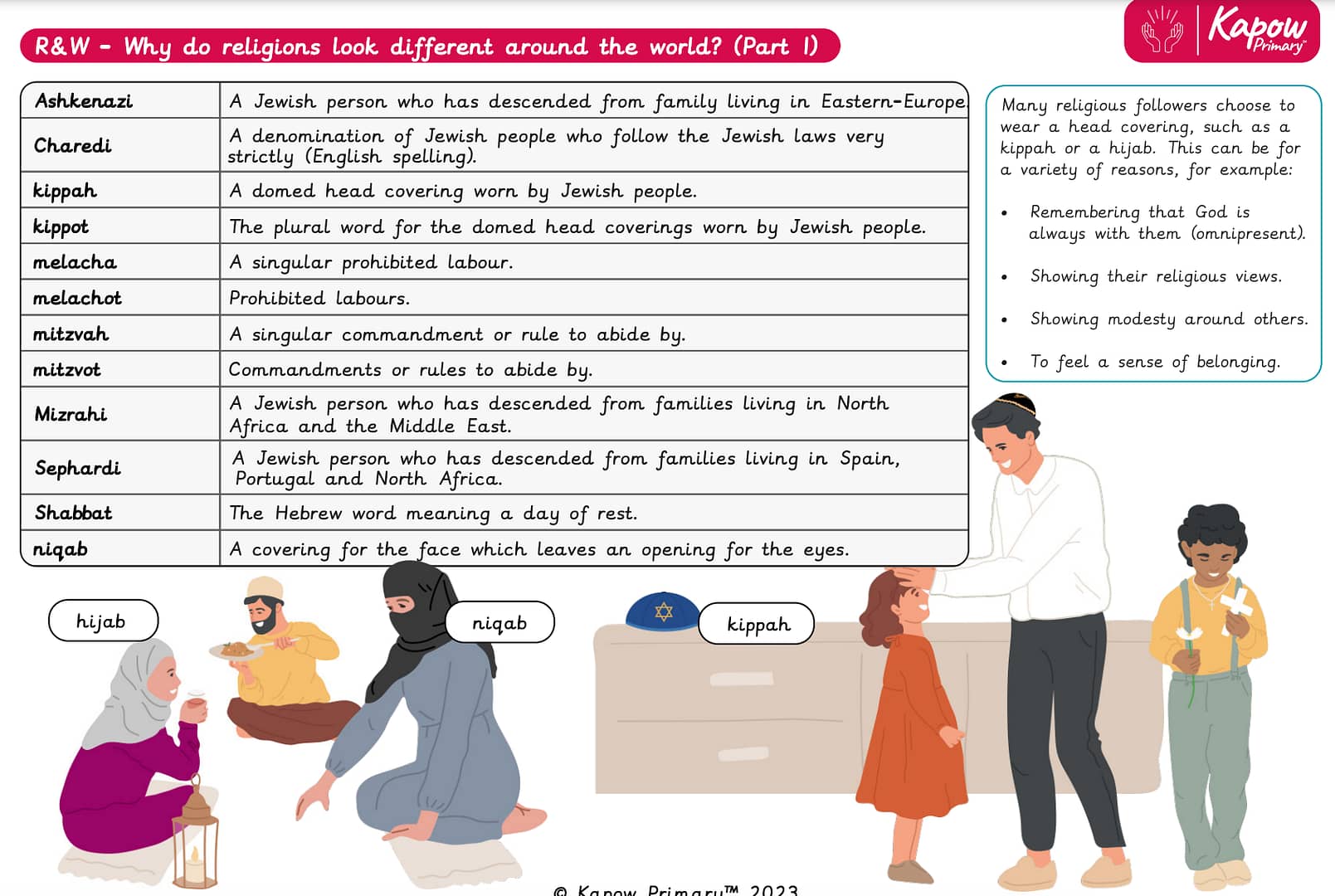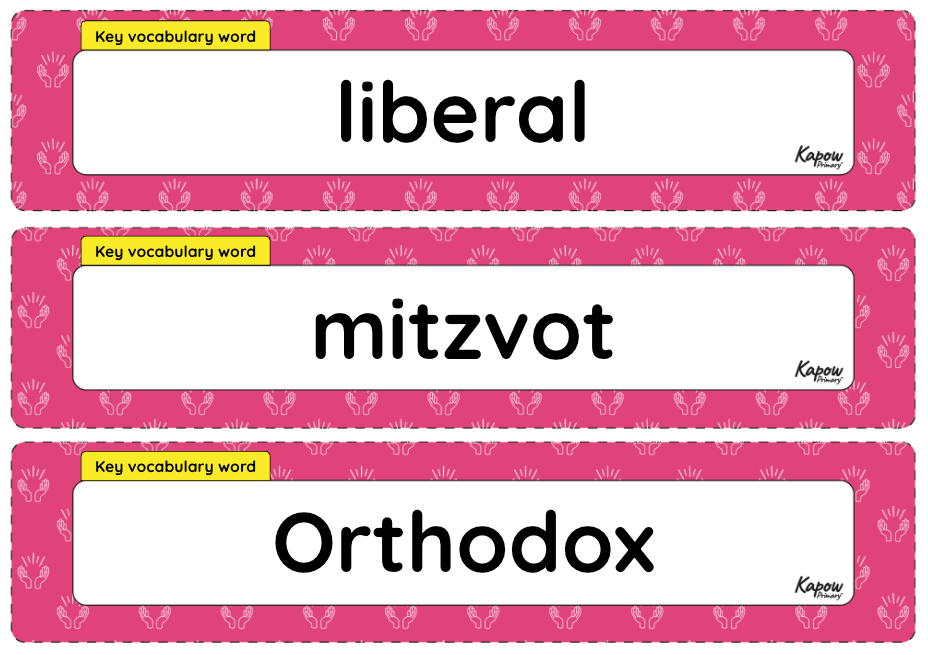Why does religion look different around the world? (Part 1)
Comparing the Abrahamic religions, children discover how some practices are observed.
The Curriculum and Assessment Review final report has been released. We’re reviewing the recommendations and planning for future updates. Learn more
- Subjects >
- Religion and worldviews >
- Key stage 2 >
- Year 6 >
-
Why does religion look different around the world? (Part 1)
Unit outcomes
Pupils who are secure will be able to:
- Explain the meaning and origin of the prefix ‘omni’ and understand the significance of omni words in religious circumstances.
- Compare similarities and differences between the Abrahamic religions.
- Recall why different worldviews may have interpreted similar origins differently.
- Give reasons about why Shabbat can be observed differently.
- Consider how geography and culture can affect religious traditions.
- Explain why people may choose to wear head wear or hair coverings to support their belief.
Suggested prior learning
Why are some places in the world significant to believers?
Get startedLessons
Lesson 1: How do some religions believe in the same God?
- To identify the similarities and differences between some Abrahamic religions.
Lesson 2: How might a Jewish person observe Shabbat?
- To identify why some mitzvot have been adapted.
Lesson 3: Why is Friday night dinner different?
- To explain reasons why traditions can vary within a religion.
Lesson 4: What can a head covering tell us about identity?
- To recognise how some religious practices are influenced by both culture and scripture.
Lesson 5: Why might someone want to cover their hair?
- To discuss reasons why someone may choose to cover their hair.
Key skills
Key knowledge
Related content
Unit resources

Knowledge organiser – R&W Y6: Why does religion look different around the world? (Part 1)
Aimed at pupils, a double page document that gives key facts and definitions from the 'Why does religion look different…

Vocabulary display – R&W Y6: Why does religion look different around the world? (Part 1)
A display version of the vocabulary from the 'Why does religion look different around the world? (Part 1)' unit.
Cross-curricular opportunities
British values: Mutual respect, Tolerance of those with different beliefs.
English: Reading – comprehension, Writing – transcription.
Geography: Human and physical geography.

